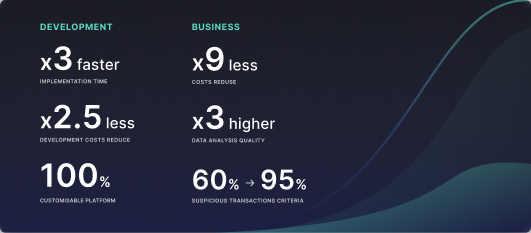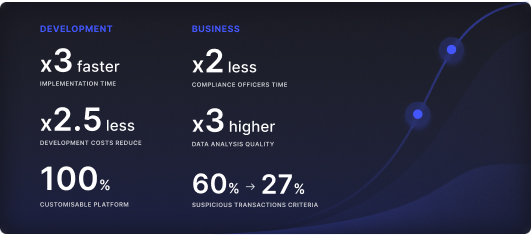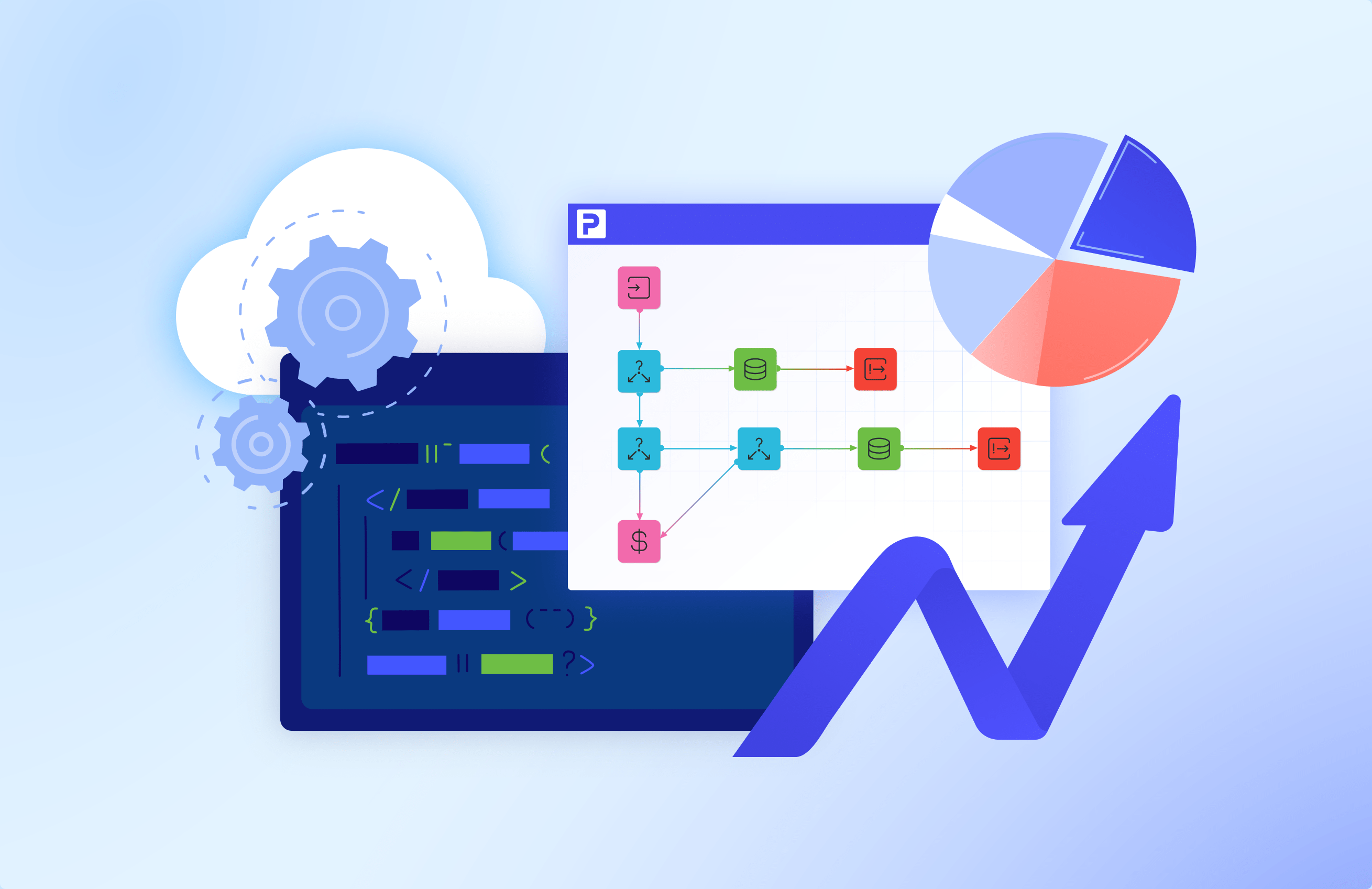Downsides of legacy credit systems


Today, more and more banks are considering replacing their core business system. Most financial organizations are still using the old core systems built in the 1970s and 1980s. The financial organizations were reluctant to invest in the new systems due to the long-term replacement process. Bankers got away with quick fixes like COTS solutions and other narrowly-focused software.
However, technology advances at a rapid pace making legacy systems more costly and unviable. According to a Bloomberg article, the necessity of digital banking services spiked after the 2019 pandemic. Legacy systems rarely employ cutting-edge technologies (AI, ML, RPA) that improve banking operations efficiency. In 2018, Gartner’s research showed that legacy banking systems are about to be extinct by 2030 due to these reasons.
In this article, we will review the downsides of legacy banking systems. Also, we will indicate the faster ways for bankers to replace them with up-to-date solutions.
Why legacy credit system replacement is crucial
Banks are under pressure to upgrade credit digital processes for both internal and external reasons. These are the major factors that push them towards legacy banking system replacement:
Rising customer expectations
Bank clients expect to access as many services from their smartphones or laptops. It’s convenient to manage your bank account, apply for the loans and repay them online. Legacy credit systems fail to handle the risks tied to the online, paperless loan granting processes.
Tight competition
Banks need to digitize their credit-related processes due to survive in the competition. Legacy credit systems have low time-to-decision, lack automation, and are harder to manage. Instead, the banks with modern credit systems and practices get an edge over the competitors with automated decision-making, improved risk management, and effective process execution.
Regulatory pressures
FinTech regulations get stricter and raise the bar for credit process standards. Banking technologies are expected to be faster, safer, and integrated with modern digital tools. Often, legacy credit systems cannot fit into the modern image of a banking credit management system. It limits the array of services a bank is allowed to present to customers and lowers the prestige of an organization itself.
How do legacy systems hinder banking organization development?
The pressure points highlight the weak sides of legacy credit systems. They hinder banks’ digital transformation and reduce profitability and credit-related process efficiency.
Higher maintenance costs
Credit systems created without a modern vision in mind are loss-making.
A legacy credit system is harder to fix and support. Enterprise-level banking systems include thousands of lines of code and work with huge volumes of data. Finding and fixing a problem that may arise during peak hours can take too much time and effort. It leads to higher IT spending and system idle time costs.
Also, there is an increasing shortage of specialists capable of managing legacy credit systems. The reason is the outdated programming languages and technologies which form the basis of such systems. The vast majority of developers strive to learn sought-after development practices. So, there are fewer specialists that work with legacy credit systems – they charge more and are hard to find.
Inflexible credit models
The old credit systems are harder to adjust in response to changing credit strategies. Every time a bank with such a system needs to add new properties to a system, the professional developers need to get back to the source code.
The same thing happened with the integrations and 3’d party service integration. Although additional banking services consider legacy credit system requirements, a bank will have to change its credit strategy to the features of the solution. That’s because off-the-shelf solutions for legacy credit system supplementation have no customization options.
On the other hand, the old-fashioned credit models are hard to scale in response to the rising amount of applications. It is extremely daunting to add new features for effective credit application processing.
Poor customer service
With the legacy system in place, banks risk dropping out from the competition due to the low-quality service and inability to present state-of-art services online. Customers expect their bank to offer online payments, fast and paperless loan granting, and support. Legacy credit systems rely on practices that are no longer effective compared to credit software with powerful decision-making engines, AI-powered risk management, and RPA process automation. As a result, customers have to wait for a long time to have their loan applications processed.
Additionally, outdated credit automation systems fail to provide service personalization features. They cannot process customer data from multiple sources in a way to offer optimal credit conditions to clients. At the same time, today’s BRMS systems and AI data analysis do a great job of making credit decisions in line with customers’ demands.
Internal inefficiencies
Legacy credit software provides poor internal data management and team collaboration. The outdated solutions are still leaving much space for paperwork and handleless digital data. Moreover, the old systems lack integration capacity. Thus, the bank’s agents waste time reentering the same data in the various banking system parts. And finally, the task assignment with legacy credit solutions demands human involvement. On the contrary, modern credit software allows one to set the task assignment parameters in a rules management engine once and distribute loan applications across departments automatically.
Increasing risks
Outdated credit models don’t give banks enough tools and functionalities to enhance risk management. Such systems are still relying on bank employees’ eyes, while the current risk management solutions analyze credit-related processes with AI. Legacy fraud detection, borrower data analysis, and calculations cannot provide the level of precision necessary to comply with contemporary service regulatory requirements.
How to facilitate legacy credit system replacement?
Legacy credit system replacement is a complex process. It requires preparation and a bank’s credit strategy refinement. First and foremost, a bank should choose the tech stack to bring all the new tools and credit decision-making core. You cannot use a one-size-fits-all approach when developing your credit software. So, the starch and the system itself should reflect your business strategy in detail. Therefore, the off-the-shelf solutions can only be a workaround during the long-term custom credit system replacement. But traditional custom development of such tools can take years and millions of dollars to deliver.

However, there are faster ways to develop modern credit systems or their parts. One of the most effective and fast today is low-code development. Banks can pick low-code platforms to build the whole infrastructure for credit decision-making with it or integrate separate parts with it. Low-code platforms for loan system development bare several benefits:
Development speed
Low-code platforms are based on visual development approach that includes pre-made components, graphical connectors, and drag-and-drop functionalities. To build the credit processing app low-code platform users don’t need to write code manually from scratch.
At the same time, low-code platforms allow to customize the applications with manual coding. For instance, when a bank needs to implement a unique strategy into its decision-making process, it can build the basis from ready-made code components and add custom elements with code.
Manual development with low-code platforms is also easier than traditional. Low-code platforms include IDEs (Integrated Development Environments) that facilitate development team collaboration and CI/CD processes. IDEs do it with features like version history, testing tools, and AI assistants.
Easy Integrations
Low-code applications for credit systems are easy to integrate with existing solutions as well as modern ones. The low-code platform offers pre-made connectors for multiple technologies so the integration process takes only a few minutes.
Flexibility
Low-code apps are easy to adjust whenever you need them. You can change the properties of the low-code credit solution within minutes without any programming. In addition, low-code apps are easy to scale due to reusable code components and flexible infrastructure.
Seamless Maintenance
Low-code platforms reduce IT department app support and maintenance. Owing to the intuitive interface and visual flows, domain experts and citizen developers (employees with little low-code training) can keep track of the app’s performance and change the properties of the app in several clicks.
Security
Low-code platform providers are responsible for the security and stability of the banking apps created on their platforms. Low-code development platforms often comply with government security standards for banking software like ISO27001, ISO20022, etc.
Try the ProcessMIX platform for credit system development.
ProcessMIX is a back-end development low-code platform. Initially, the platform was developed for the banking industry’s needs. ProcessMIX includes functionalities and customizable components for credit decision-making engine development, AI-powered fraud detection tools, borrower scoring engines, banking data management, online support, and more.

The platform allows users to create automated credit decision-making flows, complex borrower scoring, transaction security control apps, calculation, and risk-management apps. The credit software is supported by AI trained especially for banking operations control.
You can try to use the platform right away with a free ProcessMIX demo. It will allow you to evaluate the platform and see if it fits your credit system development project requirement. If you have any questions regarding loan processing software development with ProcessMIX, you can contact our team or read our comprehensive User Guide.
 Visual Development
Visual Development Assignment of risk level and customer category within KYC processes at customer onboarding
Assignment of risk level and customer category within KYC processes at customer onboarding Cross-Sell Offer Calculation for the 12M Client Base
Cross-Sell Offer Calculation for the 12M Client Base


